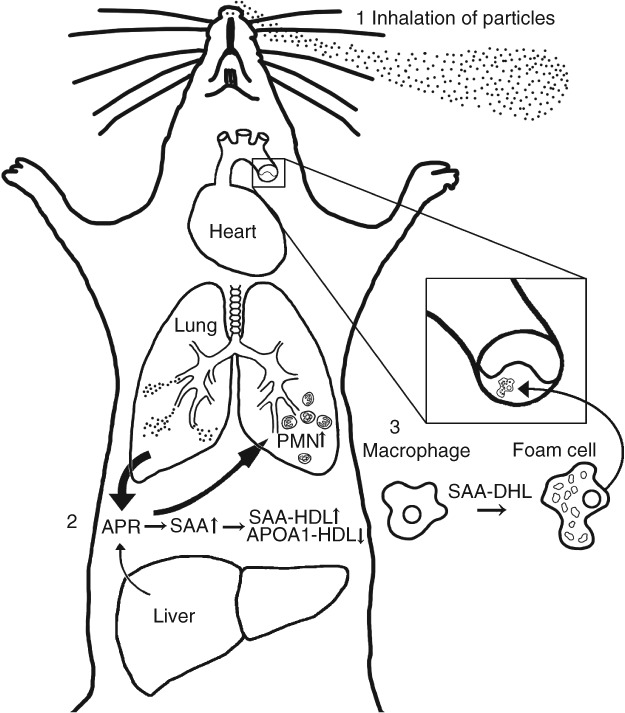Fig 5.

The proposed mechanism of action of particle-induced cardiovascular disease. Inhalation of particles (indicated by 1 in the figure) leads to a pulmonary acute phase response (2). The accumulation of SAA in lungs leads to attraction of neutrophils. SAA is incorporated into HDL (3), replacing APO-A1 and goes into systemic circulation. SAA-HDL is deficient in reverse cholesterol transport and promotes foam cell formation from macrophages, leading to plaque progression.
